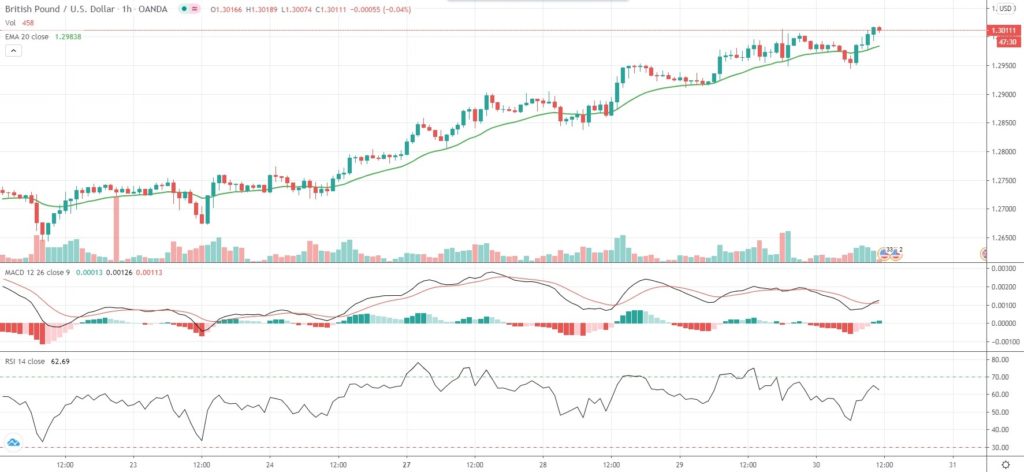GBP/USD remained mostly stable near the 1.3000 mark in late European trade on Thursday, after earlier touching 1.3019, its strongest level since March 10th, as risk sentiment somewhat improved following a promise by Fed Chair Jerome Powell that the central bank will “do what we can and for as long as it takes” to limit the negative impact on US economy from the COVID-19 pandemic.
“GBP investors remain in a cautious wait-and-see approach as UK-EU trade negotiations (the key driver of the currency) appear at a standstill,” ING strategists wrote in an investor note.
They also pointed out that the Sterling was predominantly driven by moves in the US Dollar, at least for the time being.
Meanwhile, the European Banking Authority said on Wednesday that financial institutions that use Britain as a gateway to the EU need to fully execute their plans for serving EU clients prior to the end of the Brexit transition period on December 31st.
“In particular, financial institutions should ensure that associated management capacity, including appropriate technical risk management capabilities, is effectively placed ahead of time,” the EU’s banking watchdog said. It needs to be “commensurate to the magnitude, scope and complexity of their activities.”
As of 11:10 GMT on Thursday GBP/USD was inching up 0.09% to trade at 1.3009, after earlier touching an intraday high of 1.3019, or a level not seen since March 10th (1.3124). The major pair has risen 1.68% so far this week and looked set for its second straight month of gains and the best monthly performance since October 2019.
In terms of economic calendar, today market players will be paying attention to the preliminary US GDP data for Q2 at 12:30 GMT. It may show that economy contracted at an annualized rate of 34.1% during the second quarter, according to market consensus. In Q1, US GDP decreased 5%, according to final data, or at the steepest annual rate since Q4 2008.
Also at 12:30 GMT the US Labor Department will report on jobless claims. The number of people in the country, who filed for unemployment assistance for the first time during the business week ended July 24th, probably rose to 1,450,000, according to expectations, from 1,416,000 in the preceding week.
Data for the week ended July 17th brought the total number of claims reported since March 21st to 52.7 million.
Bond Yield Spread
The spread between 2-year US and 2-year UK bond yields, which reflects the flow of funds in a short term, equaled 23.0 basis points (0.230%) as of 10:15 GMT on Thursday, up from 21.6 basis points on July 29th.
Daily Pivot Levels (traditional method of calculation)
Central Pivot – 1.2974
R1 – 1.3037
R2 – 1.3076
R3 – 1.3138
R4 – 1.3200
S1 – 1.2935
S2 – 1.2873
S3 – 1.2834
S4 – 1.2795






